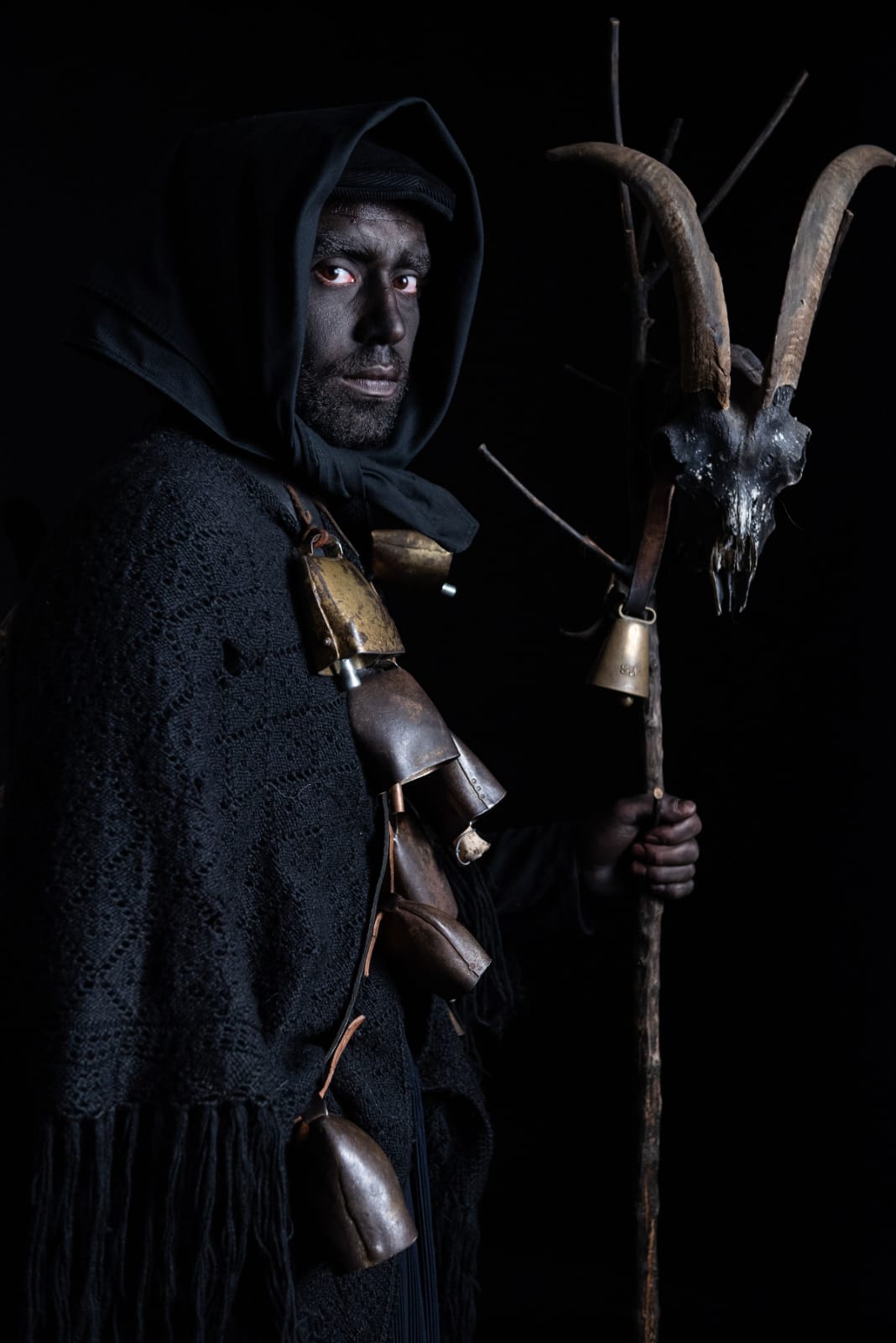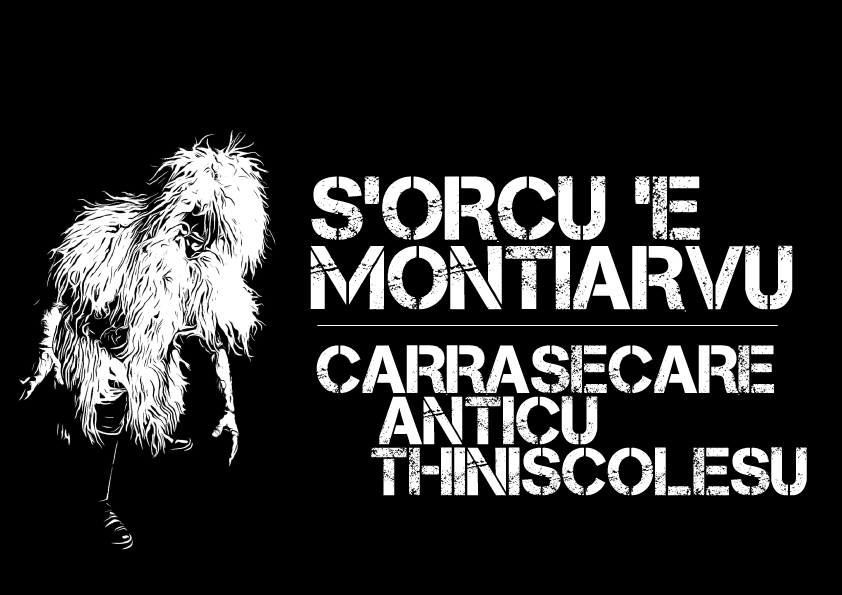Su Tintinnatu
A figure of great importance in the Ancient Carnival of Siniscola is “su Tintinnatu”.
Dionysus entered the bodies of these men, transforming them into evil souls. The name is linked to “su tintinnu”, which is the sound of the rattles they held tied around their necks, and also to “Thitieddu”, the burnt cork used to darken the face and arms. The clothes are those of grieving widows, showing the signs of death and accompanying s’Orcu on the last journey to the sacrifice, in honour of the God.
These figures try to tame him with whips and pitchforks, and the sound of their rattles shakes the earth so that it awakes from its winter sleep. The staff they carry, on the top of which is placed a mouflon or goat’s head, is raised to the sky to propitiate the arrival of the rains for the harvest.
With the rise of Christianity, only the figures of “su Tintinnatu” and “sa Partorja” continued to be accepted and allowed during Carnival. In this way, the bloodiest part of the ritual was avoided and omitted, as the whole part of the animal sacrifice, which for the Church represented the ultimate symbol of Paganism, was cut out.

